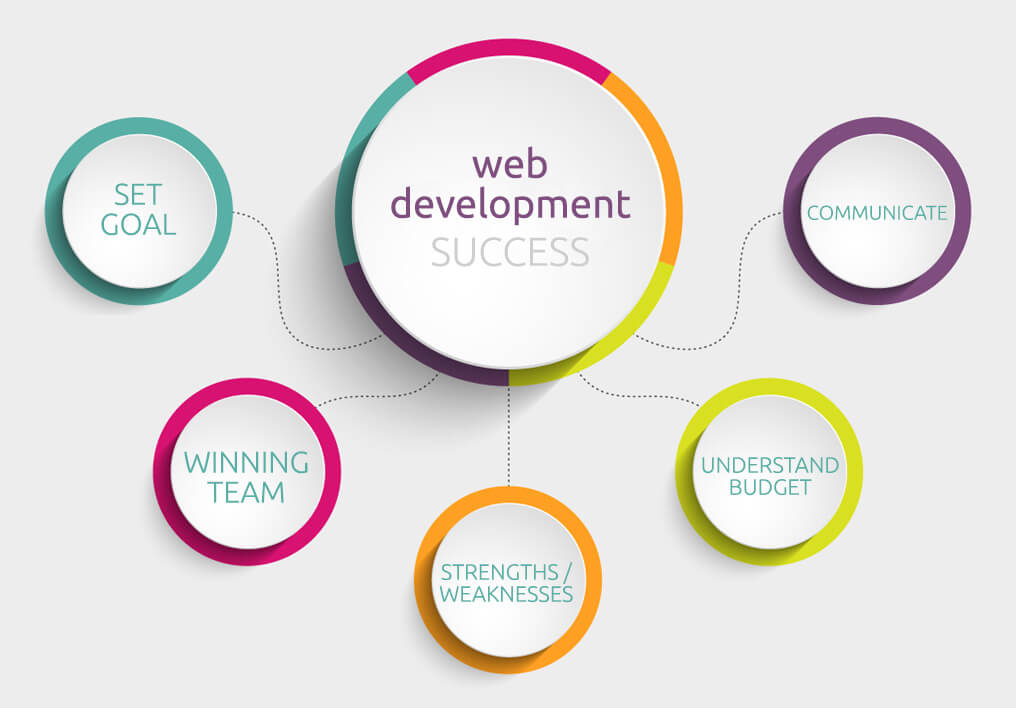5 Point Strategy for Successful Website Development Projects

A few days ago, I receive a call from one of our agency partners. They had been working with a development company on a website for about 5 months. The project had stagnated. Nothing had been done on the website in a few weeks. And, now, the client was starting to get upset. It was crunch time! And, while I was listening to the details about how they wanted me to go in and “finish up” the work, I began to wonder. How many times have I seen this happen with website development projects? I can’t tell you the exact number, but it must be 7+ times a year that I get this kind of phone call.
So, I thought I’d put together a list of points that, I believe, make for a fool-proof strategy for success. Let’s call them the 5 Point Strategy for Successful Website Development Projects (phew!):
Point #1: Set a Goal
When my team builds a website, every single team member understands the goal. There has to be a goal for the website. If there isn’t a goal, set one. What do you want the website to do? Be specific. The goal could be for users to contact you via a contact form. Or, the goal of the site could be to help people find your locations or book tickets for one of your events. Set the goal and make sure your entire team knows that goal. That way, marketing, UX/UI, and development are all on the same page.
Point #2: Pick a Winning Team
I am so glad to work with amazing people in the digital marketing space. I work with some of the best design firms and marketing agencies in North Atlanta and around the country. A successful website is dependent on more than just code. You have to consider the marketing strategy, the design, and even SEO when you want to create a great website. But, it’s all about the team. Picking the right web developer is important. Our agency partners choose us because they know we’ll be there when they need us.
Point #3: Know Your Strengths & Weaknesses
This is really a tough one. You just have to know when you need to bring in an expert. I recently worked on a project for a long-term client. They were making SEO decisions and needed my advice. But, there were a few areas I couldn’t confidently guide them. So, I called up one of my SEO partners to help. They’ve done a great job and already brought results that I couldn’t bring. You have to know your strengths and weaknesses. In my experience, I’d rather direct my client to a reputable source, than try figure it out myself. After all, it’s their money on the line.
Point #4: Understand the Budget
Note that it says understand and not know the budget. It’s one thing to know the budget, but to understand the budget is another thing. Here’s an example. This year, I built out a new version of an existing website for a client. They wanted a site refresh. And, at the start of the project, we got a budget from them. I can’t tell you the number, but it was a fair amount. It wasn’t big enough for a complete website overhaul, but it was more than enough for a refresh. So, I made it a point to understand the budget better. I asked the client, “what if we could actually re-build this site completely for slightly more than your current budget?” Well, that’s exactly what we ended up doing. The client was shocked, in a good way, that we could get them so much further with only a little more investment. And, as a result, they have a new website that will be current and usable for years to come.
Point #5: Communicate
The responsibility for communication belongs to each member of the team. I see a lot of website development projects fail when the role of communicator is placed on the project manager alone. They end up sending endless emails to try and find out the project status from the various vendors. This isn’t the best way to work. I try, as the web development partner, to send updates throughout the development process. This helps reduce the amount of guesswork on the project manager’s side. Great communication also reduces surprises, scope creep, and unwanted budget overages.
So, to those who are about to build a new website, I’d say, stick to this 5 point process. This is how I’ve done things for over a decade. And, I hope it helps you as well.
